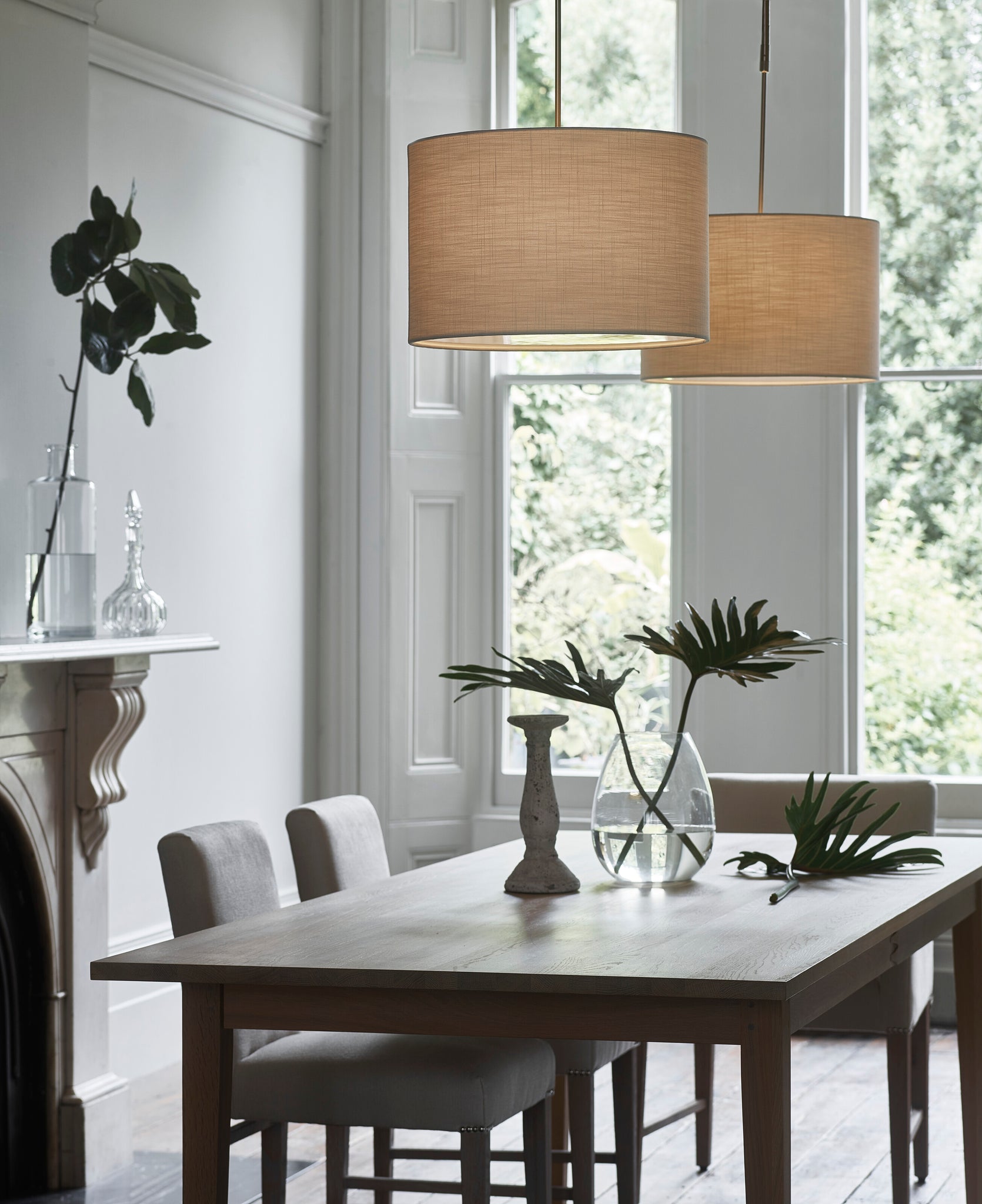It’s one of home design’s classic conundrums: choosing a lampshade that looks right with your table or floor lamp, and that sheds just the right amount of light. Here are our tips for finding the perfect fit.
Positioning
Proportion is key to a successful room scheme. So, before you even settle on a lamp (never mind its shade), take a long hard look at the space’s height and shape. This is especially important when considering a floor lamp as a low ceiling can push a tall one out of proportion (in this case, try our Highgate, which is shorter than the average floor lamp). Equally, take into account the height and area of the surface you plan to sit a table lamp on – a wide lamp that requires a broad, cone-shaped shade will fit perfectly on a generous, round table, but a narrow console will feel uncomfortable with a large lampshade protruding over its edge – and especially so in a hallway where it’s liable to be knocked.

Relating
As well as thinking about how the lamp and lampshade combination works in your chosen position, you’ll also need to consider the shade’s proportion in relation to the base. Too tall or wide and the effect will be top heavy; too short or narrow and the lamp will look unbalanced. Try lamps and lampshades together if you can (even if it means carting the lamp to the store with you) and trust your eye. But, if you’re not sure, follow our failsafe formula…
The width of a lampshade should be roughly equal to the height of the lamp base, and the height of the lampshade should be about two-thirds the height of the lamp base. The shade should also be wider than the widest part of the base to keep the whole lamp looking balanced. When it comes to floor lamps, aim for a shade with a base diameter of 45cm or larger.


Shapes
There are four main lampshade shapes and all have different qualities. The classic cone shape is often called an ‘empire’ shade and works well with rounded bases. The cone can be angled slightly, like our Lucile shade, for a subtle look, or wider, like the Oliver shade, for a stronger statement. Henrysits somewhere in between. The square or rectangle shade (like James) is great for narrow or awkward spots, such as a mantelpiece, as it will tuck neatly against the wall. This silhouette tends to sit better with a more angular base. A drum shape, or cylinder, has a contemporary feel and can be scaled up easily. Our Iona drum shade includes a diffuser screen to soften the light streaming from such a wide base when it’s used on a ceiling light. And finally, the versatile oval shade has a more traditional feel to it.

Materials
Consider what type of light source you want to create. Thicker, darker fabrics, such as our Angus Flint wool-covered Oliver shade or the Slate cotton-linen ones (available on Henry, Lucile, James and Oliver), will direct light in defined, up-and-down beams. These work well if you want to highlight an area or create a mood. Alternatively, paler, more translucent fabric covers are better for reading lamps and adding ambient light to the room.
Finally, how the fabric is applied will also impact on the finished look: smooth, tightly stretched fabric shades feel refined and contemporary; pleats are cosier and more traditional and look good paired with an antique-style base.


Explore our lighting collection online here or in your nearest store.

